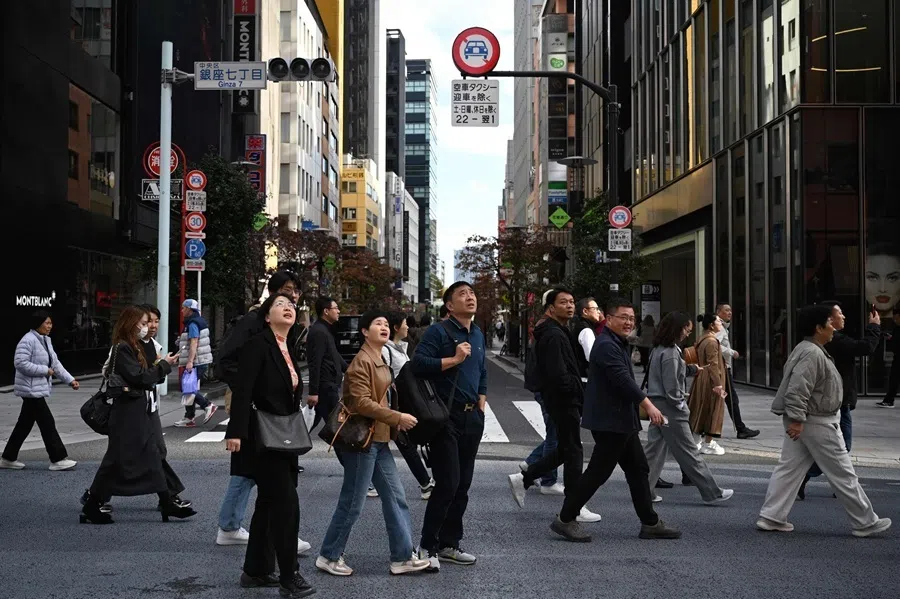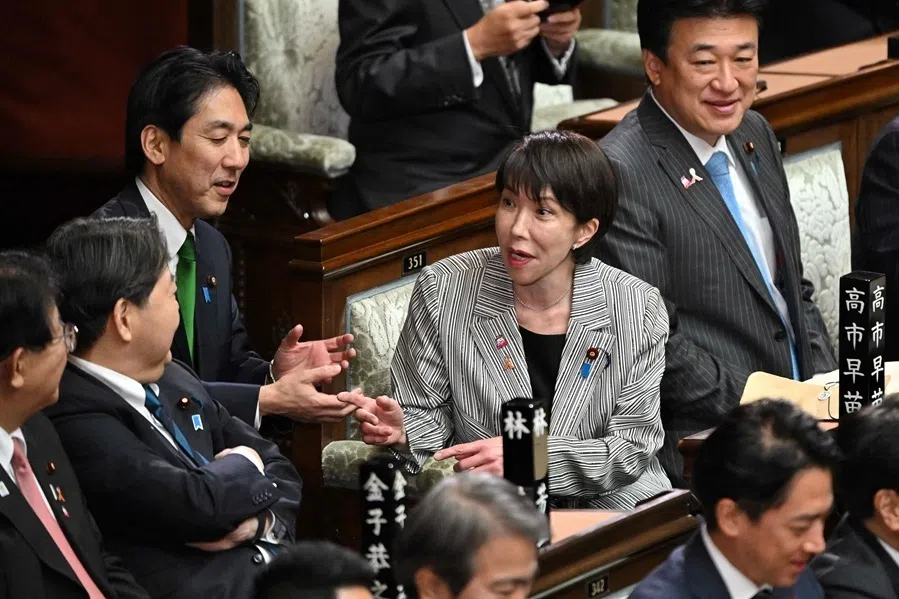Tan Min Yih: How Shell Mobility gets ready for a green future
As part of Lianhe Zaobao’s Future 365 interview series, Lianhe Zaobao editorial consultant Goh Sin Hwee speaks with Tan Min Yih, senior vice president of Mobility Asia, Shell. He gives his take on the energy trilemma — energy security, energy affordability and energy sustainability — and how Shell is gearing up for future mobility opportunities and keeping up with advanced electric vehicle policies in countries like China.

What kind of mobility tool would cars of 2030 be? This question was posed in 2020 to 230 key figures in the global auto industry in a survey. They answered that cars would likely have three standard features: high-speed wireless internet, wireless charging and car-to-car communication.
Moreover, all new cars in 2030 would be fully electric or hybrid, and the issue of range anxiety — the challenge of charging — would be resolved. All cars would also be equipped with autonomous driving capabilities, and all customers would expect cars to be environmentally friendly.
Based on these trends, 56% of respondents believed that in 2030, cars would be at least 50% more expensive than cars in 2020.
This survey conducted by American electronics components manufacturer Molex outlines the key trends and technologies that will influence future automotive strategies and business decisions. Molex is one of the world’s largest manufacturers of connectivity products, services and solutions. Its key clients include leading automakers driving the future of the automobile industry.
Intelligent, interconnected and green
The automotive technologies envisioned by these major automakers for 2030 are already starting to emerge in 2025. Some of these visions have rapidly advanced in recent years, such as the various digital and intelligent technologies required for autonomous driving, fast-charging technology and the exploration of various new energy and eco-friendly vehicles.
Experts in human mobility trends believe that the future of mobility will be smarter, more interconnected and greener. This includes autonomous driving technology being more sophisticated, with autonomous cars, drones and public transportation becoming a reality.
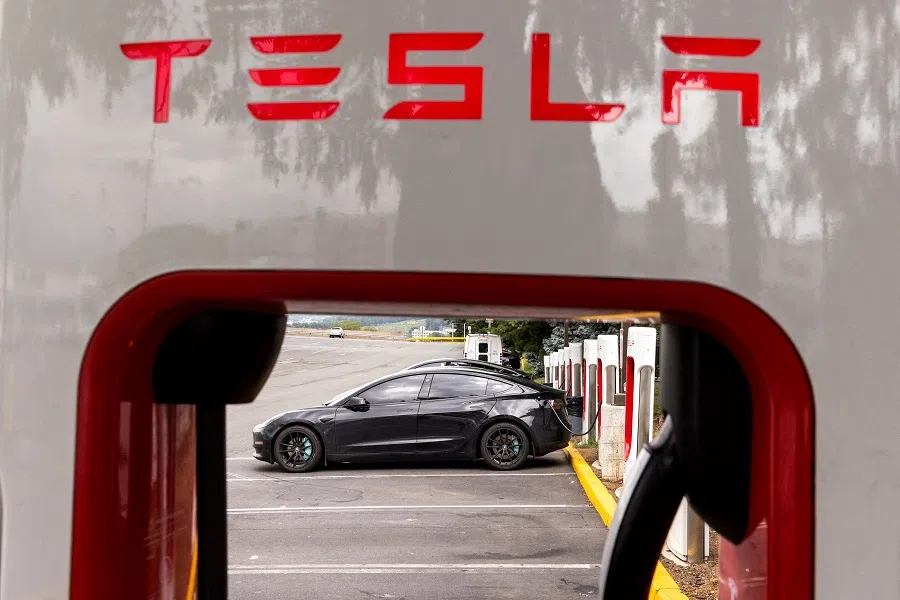
Vehicles will be interconnected through the Internet of Things (IoT), which will optimise traffic flow and improve transport efficiency. Shared mobility models will also further develop, and all of these developments will help reduce carbon emissions and lessen the impact of ongoing climate change. Data from the International Energy Agency shows that road transport accounts for around one-sixth of global emissions.
Customised solutions and localised strategies
A longtime observer of the evolution of energy markets and mobility, Tan Min Yih, senior vice president of Mobility Asia, Shell, said that human mobility trends are undergoing a profound energy transition in response to the climate crisis and the need for sustainable energy. This transition, however, necessitates new infrastructure, strategic deployment of low-carbon measures and deeper digitalisation across sectors.
Crucially, balancing development with decarbonisation goals requires acknowledging the diverse circumstances of different countries and markets. This nuanced approach is essential for building public and business trust, fostering wider participation in the energy transition.
“When you come to our service stations in Singapore… you can enjoy a cup of coffee while you’re charging your car. If you go to Malaysia… you can buy nasi lemak at the same time and enjoy it...” — Tan Min Yih, SVP, Mobility Asia, Shell
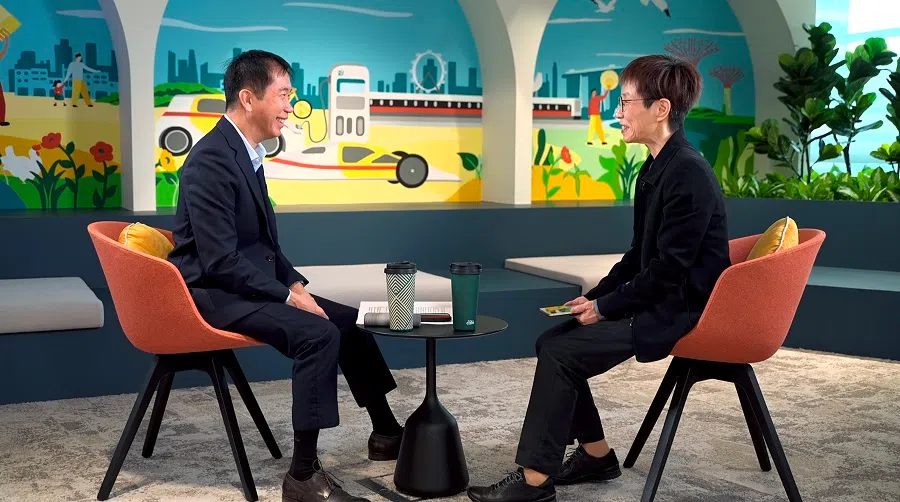
In an exclusive interview with Lianhe Zaobao, Tan said that Shell’s experience as a major energy company in the mobility sector has shown that supporting the development of low-carbon mobility in various regions not only requires customised solutions but also strategies tailored to local circumstances. Then only will customers in every market experience convenience, have options and feel confident.
For example, as more countries and regions promote the use of electric vehicles (EVs), Shell is progressively expanding its network of approximately 46,000 service stations in more than 80 countries to include charging stations as well. Considering the time required for charging, service stations are also expanding to become one-stop retail destinations for everyday goods and snacks. “When you come to our service stations in Singapore… you can enjoy a cup of coffee while you’re charging your car. If you go to Malaysia… you can buy nasi lemak at the same time and enjoy it. And if you go to Thailand, you can also enjoy Thai iced tea and at the same time have your car washed after you finish charging it,” he said.
Providing convenience and options
Through its digital app, the company enables customers to quickly locate Shell service stations and nearby charging stations in Singapore. About a year ago, the company also won a Housing and Development Board (HDB) tender, allowing it to deliver around 5,000 charging points to the northern and northeastern parts of Singapore over the coming years.
Shell has also partnered with Porsche to install over 50 high-speed charging points along the route connecting Singapore, Malaysia and Thailand, enabling EV drivers in these three countries to travel at ease between them. It was reported that these charging stations, which include food and beverage services, have an average charging time of less than 25 minutes, demonstrating the feasibility of long-distance, cross-border EV travel, offering both speed and convenience.
“... we need to recognise that we are constantly grappling with the energy trilemma — energy security, energy affordability and energy sustainability…” — Tan
Tan said that providing convenience and options is crucial for guiding and advancing the energy transition, especially during the transition period, as offering options, such as different charging speeds, builds confidence and encourages adoption. This is because not every market has the conditions for fast charging, and not all customers can afford it.
He noted, “When it comes to the energy topic, we need to recognise that we are constantly grappling with the energy trilemma — energy security, energy affordability and energy sustainability… How do we find that right balance is really to do it at the pace that every government and citizens are ready for.”

Since 2010, the World Energy Council has published the World Energy Trilemma Report, which evaluates and reports on how well approximately 130 countries balance the three dimensions of the trilemma. In 2023, Singapore had an overall score of 70.1 and a rank of 31, scoring 38.9 in energy security, 98.4 in energy equity, and 68.4 in environmental sustainability.
“I think we are not in a bad place,” Tan opined, citing Singapore’s EV policy as an example. “We are doing this at pace and not rushing also too quickly because we need to look at how technology evolves and also have the right policies that support the basic, essential needs of the citizens, which is about the mobility of goods and people and is about affordability. And that to me is a very important point because once we have achieved a certain level of energy security… then we need to ensure that there is affordability and at the same time, don’t wait too late to tackle sustainability.”
“What they [China] have done is they have a focus not just on the customers, but also on infrastructure… They have supported the EV manufacturing industry… [and] also supported battery technology makers…” — Tan
A comprehensive solution: EV development in China
Singapore aims to achieve the vision of 100% cleaner energy vehicles by 2040. To achieve net-zero emissions, EVs are undoubtedly the current frontrunner in energy transition. The International Energy Agency predicts that global EV sales will reach nearly 300 million by 2030.
Major markets such as China, Europe and the US are actively promoting the development of the EV industry, and introducing corresponding supportive policies and infrastructure development plans. Among them, China has become the world’s largest EV market, selling over 6.8 million new energy vehicles (including battery electric and plug-in hybrid EVs) in 2022. Europe plans to ban the sales of traditional petrol and diesel vehicles by 2035.
Meanwhile, all new diesel car and taxi registrations in Singapore will cease from 2025. From 2030, all new car and taxi registrations will have to be of cleaner-energy models, and all traditional petrol and diesel vehicles will be phased out by 2040.
Tan noticed that China has had a very deliberate EV policy since 2016. “What they have done is they have a focus not just on the customers, but also on infrastructure… They have supported the EV manufacturing industry… [and] also supported battery technology makers… So this is what I think has been done very deliberately. And they also allow innovation… [and] different ideas to come up. And right now, even BYD has become the largest EV manufacturer in the world, right? It is larger than Tesla,” he observed.
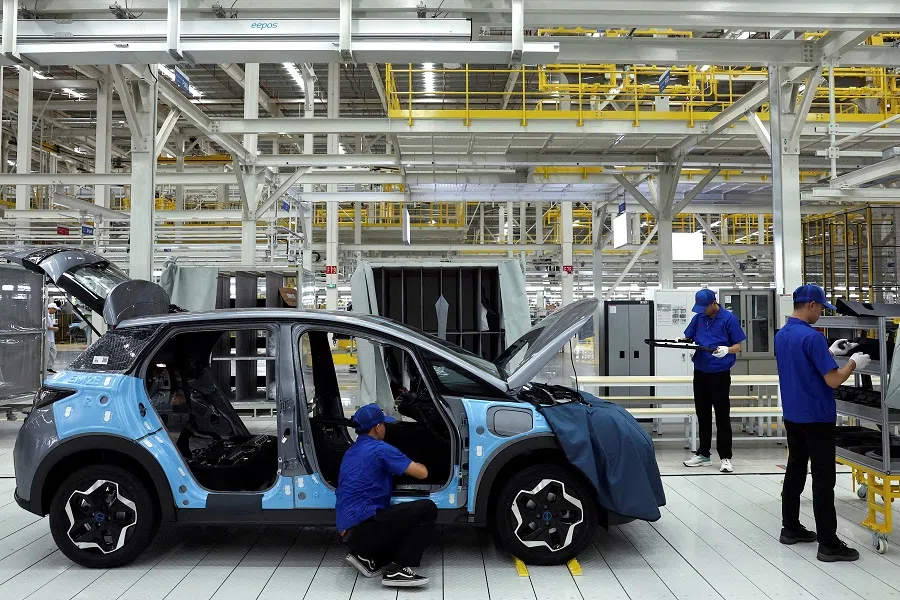
At the 2024 China Automotive Forum held last July, the China Association of Automobile Manufacturers said that China has become the main battleground for global new energy vehicle competition, with production and sales leading the world for nine consecutive years. In 2023, China sold 9.5 million new energy vehicles, accounting for over 60% of the global market share.
New energy sources and delivery
However, the global adoption of EVs will not happen overnight; bottlenecks in battery technology, insufficient charging infrastructure and concerns about power supply reliability in some areas all pose challenges to the promotion of new energy vehicles.
Also, some countries are exploring diversified energy transition channels, including hydrogen power generation and hydrogen fuel cell vehicles, as well as biofuels produced from renewable resources, to reduce carbon emissions in the transportation sector.
Tan said that hydrogen energy is also a field that Shell continues to monitor and evaluate. However, in terms of the mobility applications, this new energy source is currently better suited to heavier vehicles like buses and is not as widespread as EVs.
... in about ten or 20 years, public charging will reach about 45%, home charging will come down to about 30%, while the rest would be fleet charging.
Given the momentum of EVs, he predicts that batteries will also rapidly evolve, becoming smaller and longer-lasting. Charging will also become increasingly convenient, with more people able to charge their vehicles in public places.
Globally, around 50% of charging sessions take place at home or at work. Another 35% occurs at public charging points, and 15% utilises charging equipment at fleet companies. Tan predicts that in about ten or 20 years, public charging will reach about 45%, home charging will come down to about 30%, while the rest would be fleet charging.
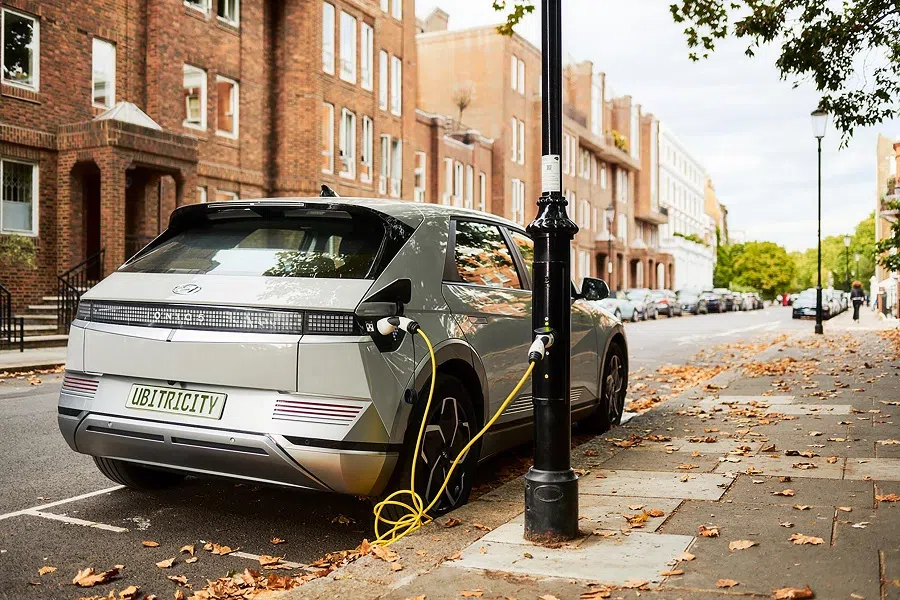
In some European countries, lamppost EV charging is already available. For example, Shell’s recent acquisition, Ubitricity, provides lamppost charging services in European markets such as the UK, Germany, France and the Netherlands.
“Because we recognise that many customers do not have home charging. And the most convenient way is actually to park the car next to a lamppost in the UK and take advantage of the electricity from the lamppost to charge their car. And so they can leave the cars overnight, charge it, pay some parking fee, and a little bit of electricity bill, and they can drive off. So these are the innovations that we are trying to provide. We also work very closely to learn from our partners,” he explained.
Notwithstanding, batteries themselves present environmental concerns, and solar power offers a viable solution for green charging. Singapore’s Energy Market Authority has partnered with Shell and local enterprise Eigen Energy to install three renewable energy — including energy from the solar panels — high-speed charging points at three existing Shell stations in Tampines, Pasir Ris, and Lakeview. These solar panels are installed on the rooftops of these stations, along with 34 other Shell stations, to ensure that the charging process also utilises green energy.
Customers first amid global competition and cooperation
Energy transition involves environmental protection, but this massive global undertaking has also become embroiled in intensifying geopolitical competition. In particular, competition is bound to intensify in EV technology, which contributes to reducing emissions from road transport, including the development of artificial intelligence (AI) within the sector.
In May 2024, the former Joe Biden administration slapped on China a rise from 25% to 100% on EV tariffs. Before stepping down on 20 January, the Biden administration reportedly planned new restrictions on the export of AI chips from companies like Nvidia to prevent advanced technology from falling into the hands of China and Russia. This also aims to keep AI development within a network of friendly countries and drive global adoption of American standards.
“And so the way we are designed and the way we run our business and our company is to reach out to our customers, to understand their preference and to cater to their needs.” — Tan
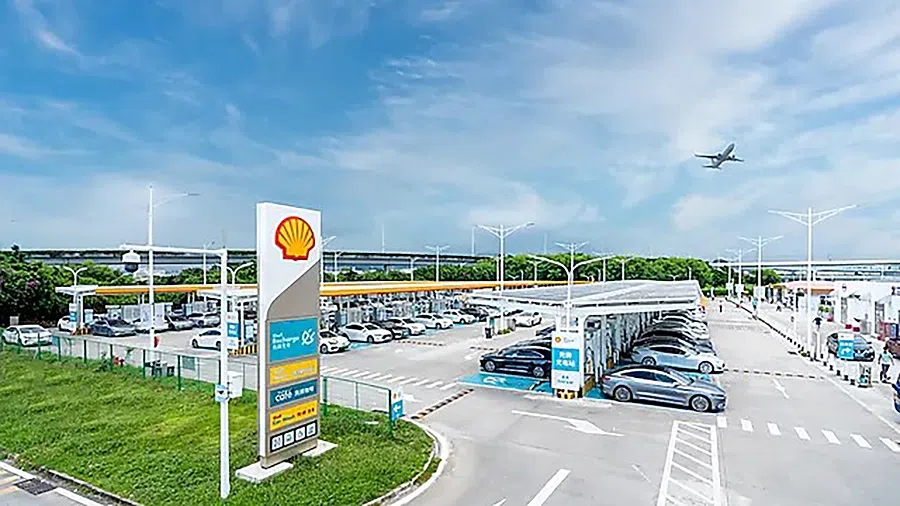
At the same time, energy transition has also spurred international cooperation. Many countries and enterprises have actively engaged in cross-border cooperation, jointly developing new energy technologies, constructing charging infrastructure and forming a green supply chain. The EU and Asian countries are increasingly collaborating on battery technology and EVs.
In Singapore, Nanyang Technological University has also partnered with Hyundai to develop manufacturing solutions for EVs and is also conducting research in new energy and smart manufacturing technologies.
Apart from its partnership with Porsche, Shell also partnered with BYD in 2023 to build and operate its largest EV charging station in Shenzhen. Besides charging, this one-stop charging station also offers customers retail, dining and lounge services.
Speaking about the impact of geopolitics on energy transition partnership, Tan said that decarbonisation is a topic that is larger than any company and country. Regardless of the political climate, he and the company firmly supports it.
“So, that to me is about how we continue to support the decarbonisation journey, regardless of the politics involved. But what is also important is to recognise that it is also a local decision. So the customers are local. And so the way we are designed and the way we run our business and our company is to reach out to our customers, to understand their preference and to cater to their needs,” he asserted.
Decarbonisation journey here to stay
The future of energy lies in the utilisation of renewable resources, mainly wind, solar, hydro and geothermal power. Energy and environmental experts agree that a concerted global effort to judiciously utilise these natural resources can help keep the planet green.
According to a report from the International Energy Agency, by 2030, an estimated 100 million households will rely on rooftop solar panels to generate electricity. Singapore also aims to achieve 2 gigawatt-peak of solar electricity by 2030, which will meet about 10% of peak daily electricity demand and generate enough energy to meet the annual electricity needs of around 350,000 households.
... the decarbonisation journey is definitely here to stay, and that the EV part of decarbonisation is also here to stay — it is just a matter of timing and readiness by different markets. — Tan
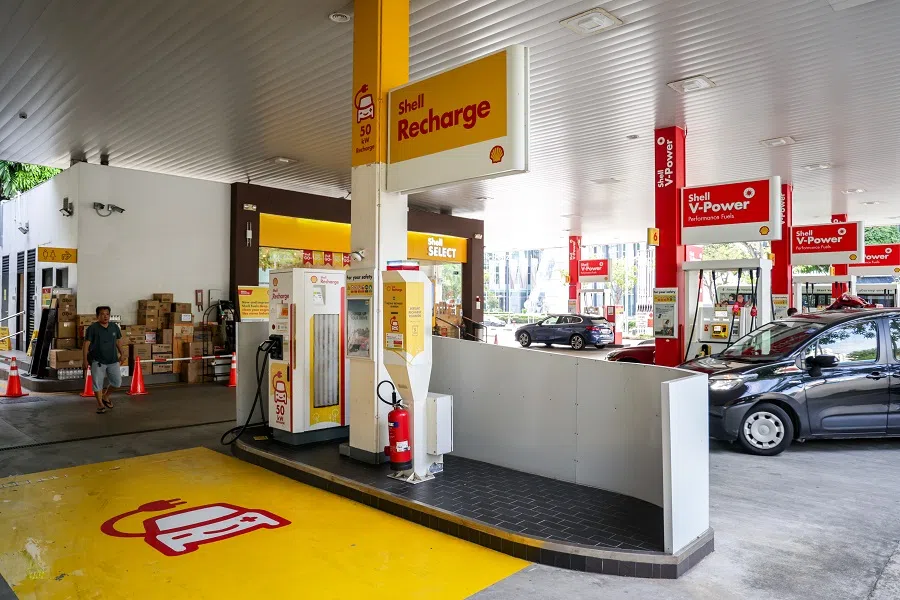
Tan is responsible for the growth of mobility business in the Asia region. Previously, he served as Shell’s senior vice president of Global Mobility Network, where he drove the expansion and resilience of global service stations and charging networks, including corporate acquisitions and the development of electric mobility infrastructure.
He said that in Asia, apart from China, Singapore is also a leader in energy transition within the transport sector. In the markets that he leads, be it India, Singapore, Malaysia, the Philippines, Thailand, or even China, they are all at different paces.
“What is important is that the policies must be ready because when the policies are ready, we will then be able to make technical changes… We can [also] work with partners who are also confident to focus their energies on that. And then we will all come together,” he said.
He added that the decarbonisation journey is definitely here to stay, and that the EV part of decarbonisation is also here to stay — it is just a matter of timing and readiness by different markets. The company undoubtedly needs to customise and localise its decarbonisation solutions.
Tan Min Yih’s recommended booklist:
Antifragile: Things That Gain From Disorder by Nassim Nicholas Taleb
Pachinko by Min Jin Lee
Federer: Twelve Final Days (Documentary)
Because Tan oversees regional business, it has turned him into a frequent flyer, constantly travelling between cities to oversee operations. He relaxes himself by reading and watching films, especially during flights. He is particularly fond of the books Antifragile and Pachinko, which share the common theme of adaptation, not just to survive, but to thrive. He says these ideas go beyond resilience and empowers us (whether as individuals, professionals, or organisations) to keep growing stronger. At the same time, the documentary about tennis star Roger Federer before his retirement, which speaks of his resilience and pursuit of excellence, has been inspirational to him.



